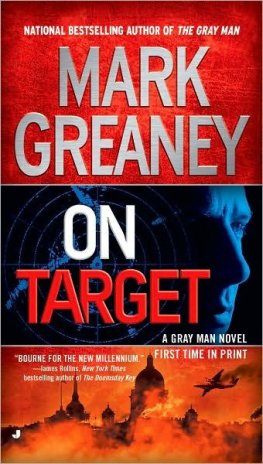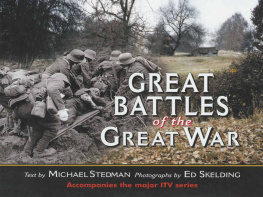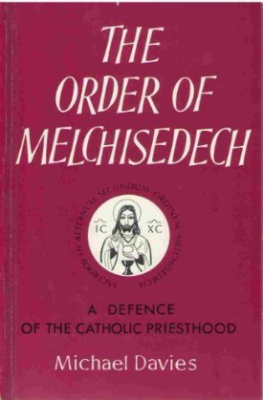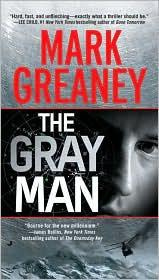Michael D. Greaney - Ten Battles Every Catholic Should Know
Here you can read online Michael D. Greaney - Ten Battles Every Catholic Should Know full text of the book (entire story) in english for free. Download pdf and epub, get meaning, cover and reviews about this ebook. year: 2018, publisher: TAN Books, genre: History. Description of the work, (preface) as well as reviews are available. Best literature library LitArk.com created for fans of good reading and offers a wide selection of genres:
Romance novel
Science fiction
Adventure
Detective
Science
History
Home and family
Prose
Art
Politics
Computer
Non-fiction
Religion
Business
Children
Humor
Choose a favorite category and find really read worthwhile books. Enjoy immersion in the world of imagination, feel the emotions of the characters or learn something new for yourself, make an fascinating discovery.

- Book:Ten Battles Every Catholic Should Know
- Author:
- Publisher:TAN Books
- Genre:
- Year:2018
- Rating:3 / 5
- Favourites:Add to favourites
- Your mark:
- 60
- 1
- 2
- 3
- 4
- 5
Ten Battles Every Catholic Should Know: summary, description and annotation
We offer to read an annotation, description, summary or preface (depends on what the author of the book "Ten Battles Every Catholic Should Know" wrote himself). If you haven't found the necessary information about the book — write in the comments, we will try to find it.
Ten Battles Every Catholic Should Know — read online for free the complete book (whole text) full work
Below is the text of the book, divided by pages. System saving the place of the last page read, allows you to conveniently read the book "Ten Battles Every Catholic Should Know" online for free, without having to search again every time where you left off. Put a bookmark, and you can go to the page where you finished reading at any time.
Font size:
Interval:
Bookmark:
SHOULD KNOW
SHOULD KNOW
TAN Books
Charlotte, North Carolina
Copyright 2018 Michael D. Greaney
All rights reserved. With the exception of short excerpts used in articles and critical reviews, no part of this work may be reproduced, transmitted, or stored in any form whatsoever, printed or electronic, without the prior written permission of the publisher.
Cover design by Caroline Green
Cover image: Polish Husaria Mariusz Jzef Kozik, Poland
Library of Congress Control Number: 2017954994
ISBN: 978-1-5051-1020-3
Published in the United States by
TAN Books
P.O. Box 410487
Charlotte, NC 28241
www.TANBooks.com
Printed and bound in the United States of America
To my mother, who waited, but did not live to see it
AS George Santayana said, Those who cannot remember the past are condemned to repeat it. Few these days, however, even learn enough of the past to remember anything in the first place; cultural illiteracy is almost universal in the West. Consequently, many people are stuck in what Santayana called the perpetual infancy of failing to know either where they came from or where they are going.
Much of the blame for this can be placed squarely on academia, which long ago drifted away from education into job training, and has now degenerated from job training into babysitting. Safe spaces take the place of discussions and debates, while new ideas are rejected as micro-aggressions forced on others with trigger words, a statue, or even a funny look or two.
Americas culture shows the results of academias failure. In the summer of 2017, for example, an article appeared chronicling the declining interest in history, Americans Declining Interest In History Is Hitting Museums Like Colonial Williamsburg Hard.
The statistics, even if they are considered worse than lies or damned lies, are depressing. They tell us that Americans do not visit historical sites in their own country with any frequency, and that number has been in continual decline for decades. Between 1982 and 2012, for example, attendance by people over eighteen went down 13 percent overall; the figure is worse for those eighteen to twenty-four years of age. The number of students taking history classes at colleges and universities fell by nearly 8 percent from 2012 to 2015, while the number of history majors dropped 12 percent over the same period.
No doubt a large part of the problem is that what passes for history these days bears very little resemblance to what actually happened. Nor does it fit into any perspective other than a vague liberal agenda and the cause du jour.
Students are saddled with politically correct interpretations and viewpoints regarding how they are supposed to think about something instead of just being told the story and allowed to form their own opinions from the evidence. As a result, students know what attitudes and opinions they need in order to achieve popularity or acceptability in modern societyor simply to avoid finding themselves on the wrong end of a club wielded by some Antifa thugbut often have no idea why they think the way they end up thinking if they think at all.
That, however, is not education, but indoctrination and brainwashing. As Saint Augustine of Hippo pointed out:
Do teachers ever claim that it is their own thoughts that are grasped and retained, rather than the branches of learning themselves that they purport to transmit by their speaking? What foolish curiosity could ever prompt a man to send his child to school in order to have him learn what the teacher thinks? When teachers have made use of words to explain all those branches of learning, however then those who are pupils reflect within themselves whether what has been said is truecontemplating, that is, that inner truth according to their capacity. It is then, therefore, that they learn.
It comes as no surprise, then, that so few people are interested in history these days, for the story has been lost in favor of forcing correct opinions onto students. Again, at the risk of repeating ourselves, many westerners today have no idea where they came from and even less of an idea where they are heading.
If that is true of our own history, matters are even worse once we venture beyond our own culture. To most Americans and, to a lesser extent, western Europeans, the story of central and eastern Europe, as well as Asia Minor, is completely unknown territory, a sort of tabula rasa or blank spot on the map.
That fact is most unfortunate, for the history of those areas has had a profound effect on the history of the world. The region was the center of civilization for thousands of years, at a time when western Europe was considered the edge of the world and the Americas were virtually unknown, except for rumors dismissed by most people as mere fables.
That is why this book should be of interest far beyond its obvious target audience of Catholics Who Want to Know About Famous Battles. Particularly in recent years, eastern Europe and Asia Minor have been in the news, but few people realize just how far back the region has been making newsor why.
To say that todays global situation is the result of the post-Cold War clash of civilizations iswhile correct up to a pointto give a description rather than a reason and to merely assert rather than tell a story.
The aim of this book is to tell the story of the struggle between the Ottoman Turks and the forces of Christendom. Covering the centuries-long war against militant Islamas personified by the Grand Turkfrom the Dreadful Day of Manzikert in 1071, climaxing in the battle of Lepanto in 1571 half a millennium later, to the beginning of the final decline with the siege of Khotim in 1622, Ten Battles Every Catholic Should Know presents key battles that marked turning points. Less well known than the struggle to retake Spain and Southern France, the battlefields of Armenia and eastern and central Europe were just as crucial to preserve Christendom.
There is the battle of Manzikert, which marked the beginning of the fight, and the real Dracula, Vlad III of Wallachia, who carried out a personal crusade against the Turks to such good effect that his name strikes terror down to the present day. The battle of Mohcs, the Tomb of Hungary, is related, as is the siege of Vienna in 1529, the first setback experienced by Sleymn the Magnificent, perhaps the greatest ruler the Ottoman Turks ever knew.
Perhaps of greatest interest is the buildup to the climactic Great Siege of Malta and the battle of Lepanto; the siege of Szigetvr (the Hungarian Alamo), and those of Nicosia and Famagusta on the island of Cyprus, the heroism of which inspired the soldiers and sailors at Lepanto. The accounts of battles are enlivened and expanded with historical footnotes and introductions explaining important and interesting details.
What results is a stirring, popular, but richly detailed, account of an often-overlooked period in history that nevertheless presents a more objective viewpoint than others in the field. Our title is perhaps not ambitious enough, for truly these are ten battles that should be known not just by every Catholic but by every individual with even a passing interest in history or current events. For this is a story that continues to unfold today.
_______________
, accessed August 24, 2017.
Saint Augustine, De Magistro, 45.
BYZANTINE is exactly the right word to describe the politics of the Eastern Roman Empire in the latter half of the eleventh century. Due to an ongoing power grab by the bureaucratic
Font size:
Interval:
Bookmark:
Similar books «Ten Battles Every Catholic Should Know»
Look at similar books to Ten Battles Every Catholic Should Know. We have selected literature similar in name and meaning in the hope of providing readers with more options to find new, interesting, not yet read works.
Discussion, reviews of the book Ten Battles Every Catholic Should Know and just readers' own opinions. Leave your comments, write what you think about the work, its meaning or the main characters. Specify what exactly you liked and what you didn't like, and why you think so.







